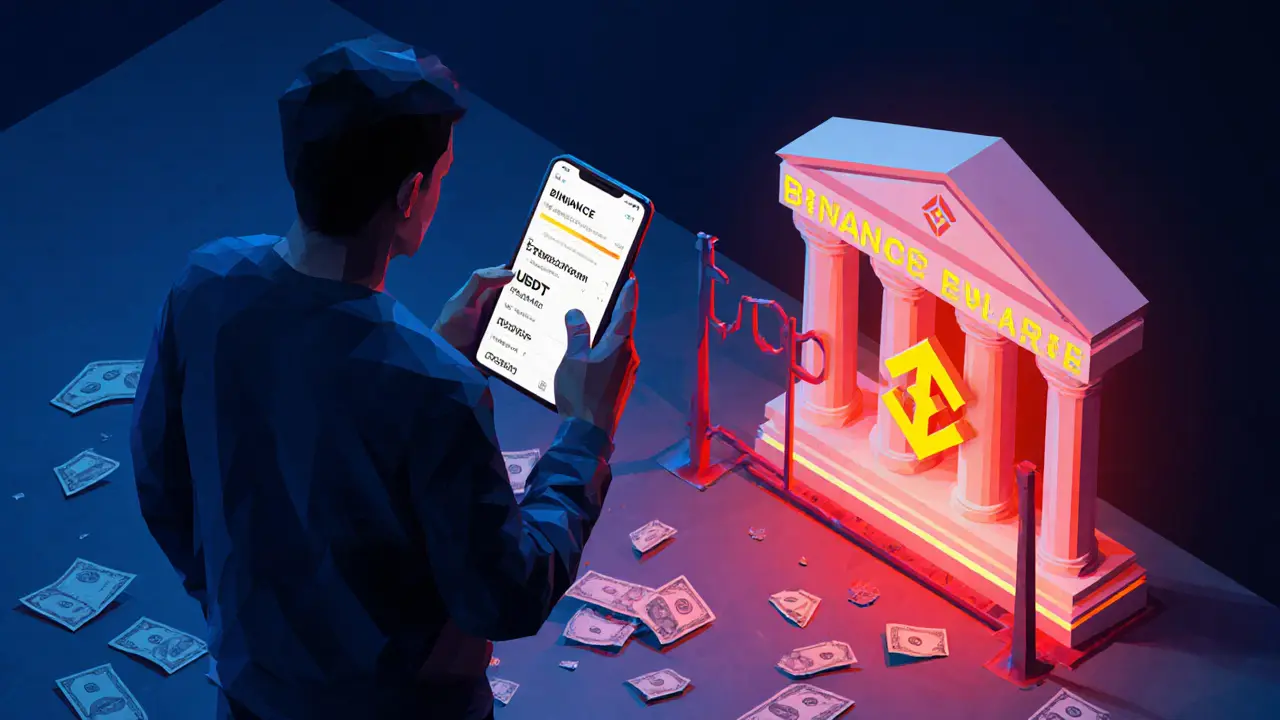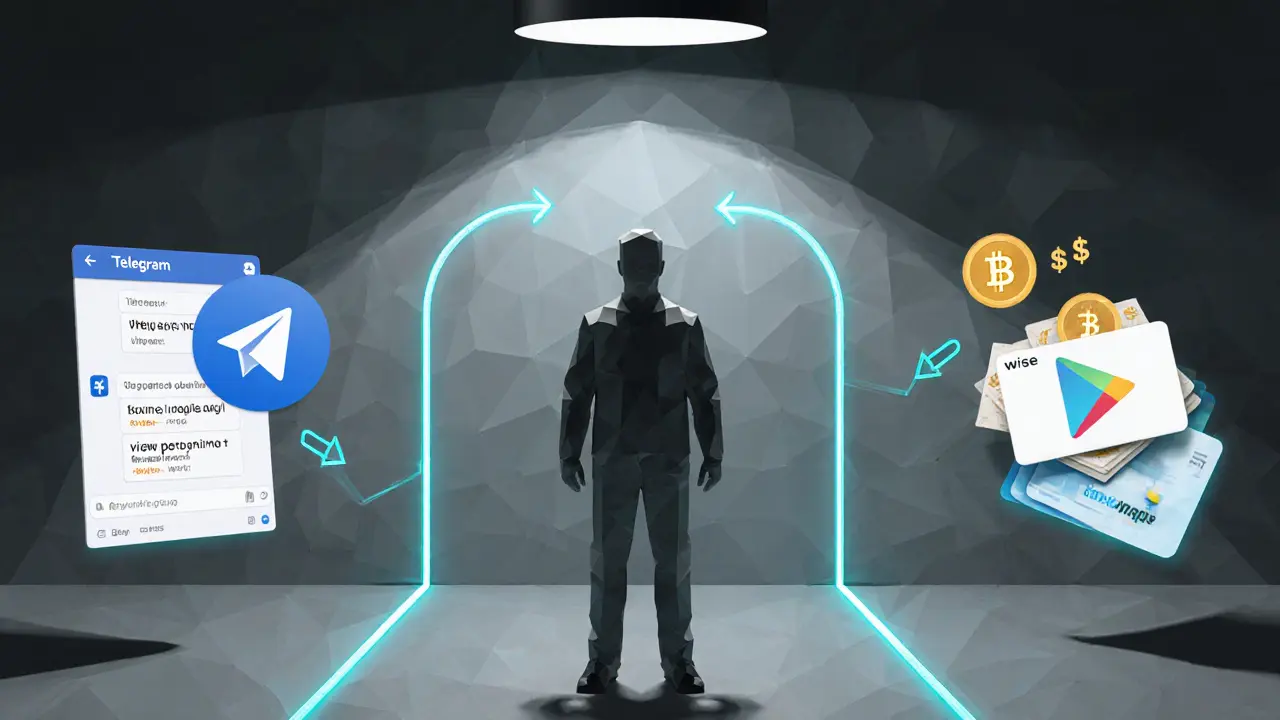Ecuador Banking Ban on Crypto Transactions: What You Need to Know in 2025

Since 2022, Ecuador has enforced one of the strictest crypto banking bans in Latin America. If you're an Ecuadorian trying to buy Bitcoin, send crypto to an exchange, or even use stablecoins to pay for services, you're running into walls built by the country's central bank and financial regulators. This isn't a rumor or a rumor - it's law. And it's changing how people use money every single day.
Why Ecuador Banned Crypto Through Banks
Ecuador dollarized its economy in 2000, replacing the sucre with the US dollar. That decision was meant to bring stability. But when crypto started popping up, officials saw a threat. The Central Bank of Ecuador (BCE) worried that digital assets could undermine confidence in the dollar. If people started using Bitcoin or Ethereum to save or send money, they might stop trusting the official currency. That could trigger capital flight, inflation, or even a banking crisis. The ban wasn't sudden. It was built step by step. In January 2022, the Junta de Política y Regulación Monetaria y Financiera (JPRM) passed Resolution 001-22. It said: no financial institution can process crypto transactions. Then in March 2023, Resolution 002-23 made it even clearer. Cryptocurrencies aren't legal tender. They aren't payment methods. They aren't allowed in the banking system. The BCE doesn't say you can't own crypto. They say you can't use banks to move it. That’s the key. You can buy Bitcoin on a peer-to-peer platform. You can hold it in a wallet. But if you try to send money from your Banco Pichincha account to Binance? It gets blocked. Your account might even get frozen.Who Enforces the Ban - And How
The Superintendency of Banks (SB) is the enforcer. They don’t just issue warnings - they act. As of July 2025, they maintain a public list of 47 crypto-related businesses that banks are forbidden from working with. That includes big names like Binance, OKX, and Mercado Bitcoin. Banks have to use a system called Transaction Monitoring System (TMS) Version 3.1. It’s programmed to catch 47 specific crypto-related patterns: sending money to known exchange addresses, rapid deposits and withdrawals, transfers to wallets flagged as high-risk. If your account triggers one of these, the bank freezes it for 3 to 14 days. Banco Pichincha - Ecuador’s biggest bank - does this automatically. If you send over $200 to a crypto platform? Your account gets flagged. In 2024 alone, the SB fined 12 banks a total of $1.2 million for letting crypto transactions slip through. That’s not a warning. That’s a penalty designed to scare institutions into compliance.What You Can and Can’t Do
Here’s the reality: the ban targets banks, not people. You won’t go to jail for owning Bitcoin. But you can’t use it like regular money.- You can’t pay for goods or services with crypto. Businesses that accept Bitcoin risk fines up to $50,000 per violation under Article 144 of the Monetary Code.
- You can’t use crypto in contracts. Any agreement tied to Ethereum or USDT is legally unenforceable.
- You can’t link crypto to the national payment system. No QR codes, no digital wallets tied to Ecuador’s Sistema de Pagos y Liquidaciones.
- You can’t deposit crypto earnings into your bank account. Even if you sell Bitcoin for cash, banks will reject the deposit if they suspect it came from crypto.

How People Are Getting Around the Ban
With 385,000 Ecuadorians using crypto (about 2.2% of the population), people have gotten creative. The most common workaround? Stablecoins - especially USDT. People buy USDT on P2P platforms, then try to send it to their bank account as a regular USD transfer. Sometimes it works. Sometimes the bank catches it. In Q2 2025 alone, 147 users reported $382,000 in frozen funds because their bank flagged the transfer as crypto-related. Other workarounds:- Gift cards - Buy Amazon or Google Play gift cards with crypto, then sell them locally for cash. Accounts for 22% of OTC volume.
- Prepaid dollar cards - Non-bank companies issue reloadable cards. You load them with crypto cash, then use them like debit cards. 17% of volume.
- Wise and similar services - Some users send crypto proceeds through Wise, which doesn’t explicitly block crypto-derived funds. 31% of users rely on this. But fees are high - 4.8% on average.
The Human Cost
This isn’t just about convenience. It’s about survival. Ecuador has one of the highest remittance rates in Latin America. Families rely on money sent from the US, Spain, and Italy. Traditional remittance services charge 6.5% on average. Crypto could cut that to under 1%. But the ban blocks that path. A 2024 study by Pontificia Universidad Católica del Ecuador found that 78% of crypto users convert crypto to cash through informal channels - cash meetups, trusted friends, street vendors. Why? Because 61% said they had no other way to access their money. And it’s not just users. Mining companies in Ecuador grew from 100 in 2023 to over 1,000 in 2025. But none of them have bank accounts. They pay for electricity, equipment, and staff using third-party processors that charge 3-5% extra. That eats into profits.What’s Next? The Fight for Change
There’s a bill in the National Assembly - Bill 6538 - that could change everything. Introduced by Congresswoman Shirley Rivera in May 2025, it proposes a licensing system for crypto exchanges. Requirements? Minimum $500,000 capital, proof-of-reserves audits, and real-time monitoring tied to the Financial Analysis Unit (UAF). But it’s stuck. The bill has been sent to three different committees. Analysts say it could take 18 months - if it passes at all. Meanwhile, the BCE is testing a Central Bank Digital Currency (CBDC). If it launches in late 2025, it could either replace crypto entirely… or force the government to accept that digital money isn’t just a threat - it’s a demand.
The Bigger Picture
Ecuador’s crypto ban isn’t just about control. It’s about fear. The country has 42% of its adult population unbanked. Millions rely on informal economies. Crypto could be a bridge. But instead of building bridges, regulators built walls. Compare Ecuador to Brazil or Argentina - both have licensed crypto exchanges, tax frameworks, and growing markets. Ecuador’s crypto market is estimated at $185 million. Brazil’s is $1.2 billion. The difference? Regulation. The World Bank and the IMF have both flagged Ecuador’s policy as problematic. The IMF noted that 63% of crypto transactions now happen through unregulated Telegram OTC desks. That’s not safer. It’s riskier. And the cost? Ecuador loses about $18 million a year in potential savings from blockchain-based remittances, according to the Latin American Institute of Economic and Social Planning.What Should You Do If You’re in Ecuador?
If you’re using crypto in Ecuador right now:- Don’t use your bank account to send or receive crypto. Ever.
- Use P2P platforms - but only with trusted traders. Avoid large transfers.
- Stick to USDT. It’s the most reliable way to move value without triggering bank filters.
- Never try to disguise crypto transfers as regular USD deposits. Banks are trained to catch this.
- Keep records of all transactions. If your account is frozen, you’ll need proof you didn’t violate any rules.
- Consider using Wise or similar services for cross-border transfers - they’re your best bet for moving crypto-derived funds legally.
Final Thoughts
Ecuador’s crypto ban isn’t stopping crypto. It’s just pushing it underground. People still buy, sell, and use digital assets. But they do it in the shadows - at higher costs, with more risk, and less protection. The ban protects the dollar. But it doesn’t protect users. The real question isn’t whether crypto should be banned. It’s whether a country that’s already dollarized can afford to ignore the financial needs of its people. The world is moving toward digital money. Ecuador is trying to stop it. But the tide is rising - and the people are already swimming.Is it illegal to own Bitcoin in Ecuador?
No, owning Bitcoin or any other cryptocurrency is not illegal in Ecuador. The ban only applies to banks and financial institutions. You can buy, hold, and trade crypto privately using peer-to-peer platforms or in-person transactions. But you cannot use your bank account to send or receive crypto funds.
Can I send crypto to Binance from my Ecuadorian bank account?
No. Ecuadorian banks, including Banco Pichincha, are legally required to block any transaction to Binance, OKX, or other crypto exchanges. If you try, your transfer will be rejected, and your account may be frozen for 3 to 14 days. The system automatically flags these transfers using a list of 47 high-risk crypto patterns.
What happens if my bank account gets frozen for crypto activity?
If your account is flagged for crypto activity, the bank will freeze it for 3 to 14 days. You’ll need to contact the bank and provide documentation proving the funds weren’t from illegal activity. But since the ban is strict, most users report that unfreezing requires waiting out the period - there’s no guaranteed appeal process. Keep records of all your transactions in case you need to prove legitimacy.
Can I use USDT to avoid the crypto ban?
Many people use USDT as a workaround because it’s a USD-pegged stablecoin. You can buy it on P2P platforms and try to deposit it into your bank as a regular USD transfer. Sometimes it works - if the bank doesn’t detect the origin. But it’s risky. In Q2 2025, 147 users reported $382,000 in frozen funds due to this method. Banks are getting better at spotting these patterns.
Is there a chance Ecuador will legalize crypto in the future?
Possibly. Bill 6538, introduced in May 2025, proposes a licensing system for crypto exchanges with strict rules like $500,000 minimum capital and real-time monitoring. But the bill is stuck in three congressional committees. Analysts estimate it could take 18 months to pass - if it passes at all. The Central Bank is also testing a digital currency (CBDC), which may replace or further restrict private crypto use.
Can I mine Bitcoin in Ecuador and use a bank account?
You can mine Bitcoin in Ecuador - there are over 1,000 registered mining operations as of 2025. But none of them have formal bank accounts. Mining profits must be moved through third-party payment processors, which charge 3-5% higher fees. Banks refuse to work with mining businesses because they’re classified as crypto-related activities under the ban.

Laura Hall
November 13, 2025 AT 17:05Michael Heitzer
November 14, 2025 AT 11:22Rebecca Saffle
November 16, 2025 AT 09:54Rachel Everson
November 18, 2025 AT 02:47ty ty
November 18, 2025 AT 13:05tom west
November 19, 2025 AT 12:01Ashley Mona
November 20, 2025 AT 15:46Johanna Lesmayoux lamare
November 20, 2025 AT 22:48Adrian Bailey
November 21, 2025 AT 11:25dhirendra pratap singh
November 21, 2025 AT 15:03Joanne Lee
November 22, 2025 AT 14:30BRYAN CHAGUA
November 23, 2025 AT 14:03Debraj Dutta
November 23, 2025 AT 20:10Phil Bradley
November 23, 2025 AT 21:36Kristin LeGard
November 24, 2025 AT 05:04Arthur Coddington
November 25, 2025 AT 12:21Arthur Crone
November 26, 2025 AT 15:59Suhail Kashmiri
November 26, 2025 AT 21:57